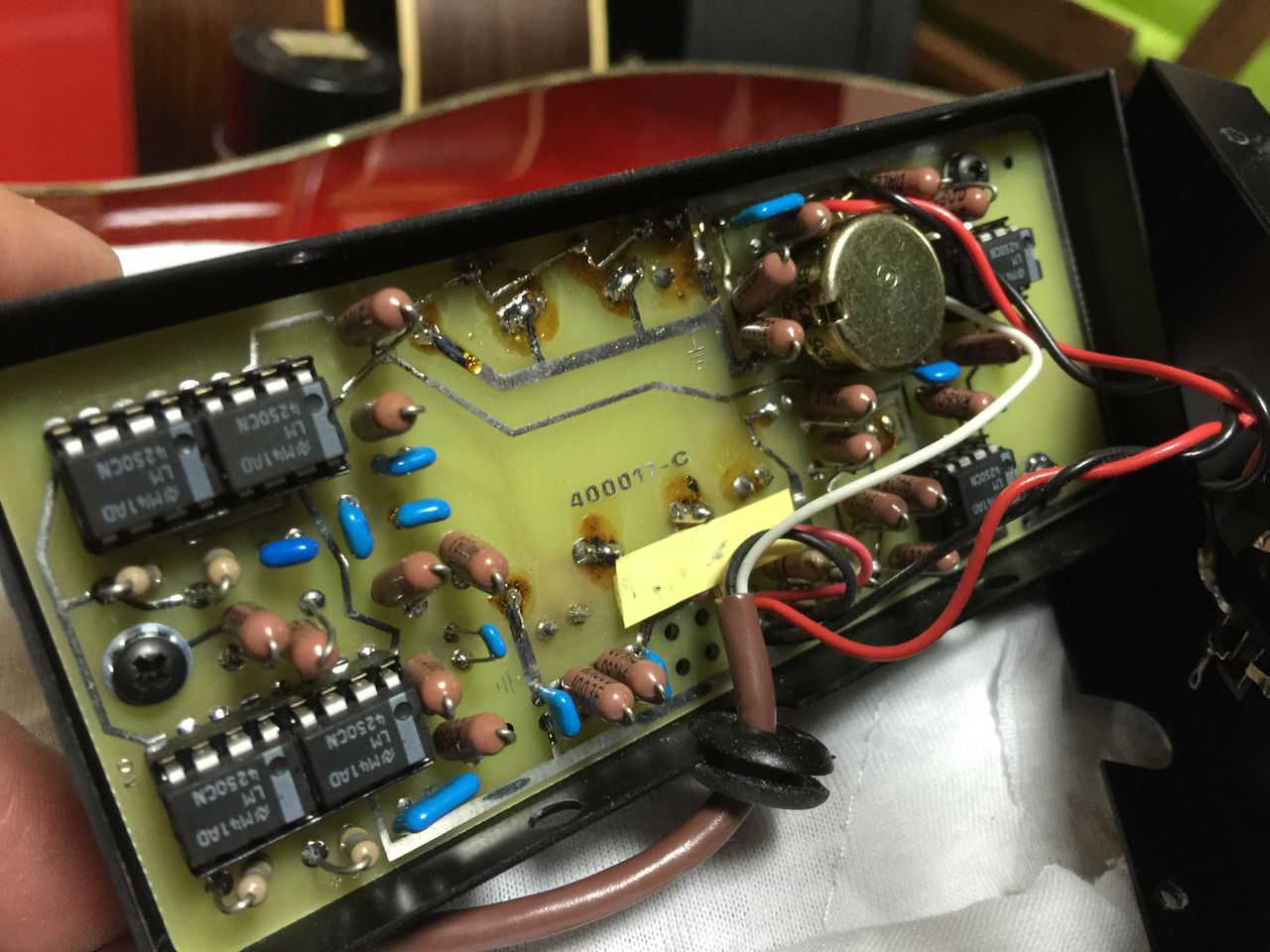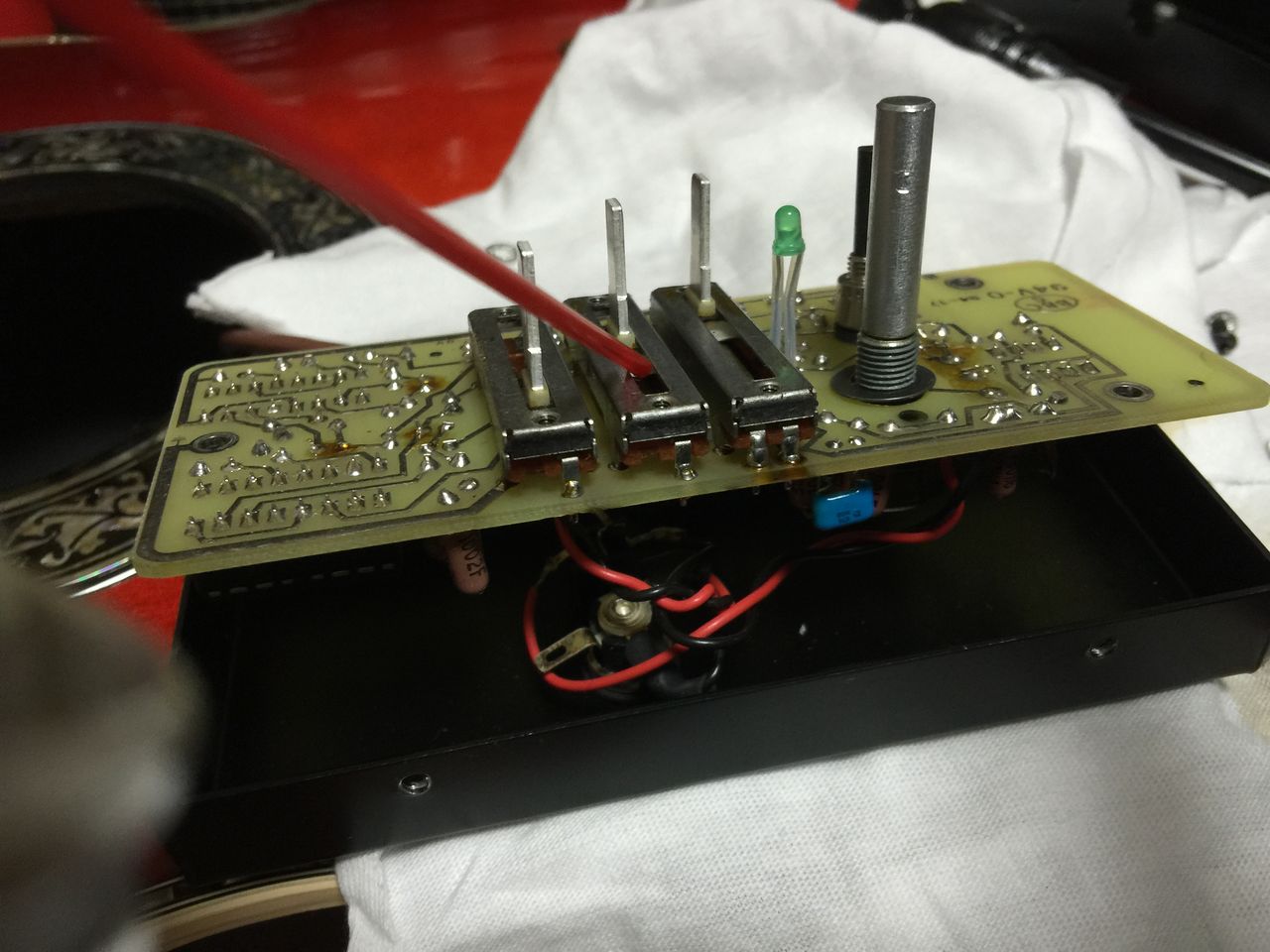|
| ||
| The Ovation Fan Club | ||
| ||
| Random quote: "It's much too late to do anything about rock & roll now ..." - Jerry Garcia / Grateful Dead |
 Re-Cap OP24 Pre-Amp? Re-Cap OP24 Pre-Amp?
| View previous thread :: View next thread | |
| Member Communities -> Bottom Feeding Luthiery Guild | Message format | |
| arumako |
| ||
Joined: October 2012 Posts: 1091 Location: Yokohama, Japan | Hey OFC/BFLG. Hope you're all doing okay. It's been a crazy unpredictable season globally, and I pray safety for all the OFC Family. Despite all that's going on I've been able to organize 5 short 60 minute outdoor praise/prayer concerts this summer with stipulations for full face masks for all but the lead singer; a strict no-stop, no gather policy for passers by, no ads, no posters policy to ensure gatherings aren't encouraged. Short concerts for no one in particular and whoever happens to come by. We finished our first two events safely and preparing our 3rd and 4th events with hopes to live stream our 5th event. Because of unpredictable weather, I've opted to use my BFLG 1868, and I'm thoroughly enjoying this SSB workhorse. I noticed the high-end sounded a bit muffled through the PA. Not a big problem, as adjusting the on-board EQ compensates more than adequately. However, it occured to me that I'd never replaced the electrolytic capacitors in the OP24 pre-amp. I've done re-caps on my Peavey Session and Mesa Boogie Mark I, and the results were astounding, but those are high output AC powered guitar amps. Do low output 9V DC powered pre-amp caps need to be replaced? I've never heard of anybody doing this and couldn't find anything on the web. I suppose replacing the few caps would do no harm, but wasn't sure how the tone of the pre-amp would be affected. Of course, the EQ adjustment "as is" gets the job done, but the treble response of the pre-amp is definitely not what it used to be. Have any of you done a pre-amp recap or heard of any such thing? Your insights would be greatly appreciated! Thanks a bunch and stay safe! | ||
| |||
| keldon85 |
| ||
Joined: July 2019 Posts: 109 Location: northern Georgia | Certainly in the hi-fi audio world changing out caps in stereo preamps and power amps was common. Walt Jung published several articles in the late 70s-early 80s on swapping out electrolytic caps for film types, especially polystyrene and polypropylene film caps. Also, in the electric guitar pedal world, swapping out cap types is a common mod. I actually bought a kit to re-do a Boss pedal equalizer, but haven't done it since it really does work well stock - some of the mods in the kit are replacements for the original caps. In many of these mods, electrolytic coupling capacitors (especially tantalums) were replaced with film caps. Unfortunately, film caps tend to be much larger than electrolytics of the same capacity. The main reasoning behind these mods is that film capacitors have much lower dissipation factors than electrolytic caps, but in most cases, the dissipation factor for the electrolytic is low enough to have little effect in how it is used. Electrolytics also work best when they have an appropriate bias voltage across them. For a preamp circuit powered by a 9 V battery (guitar preamp) that condition is almost certainly met. One issue with electrolytic caps, is that they can dry out over time, especially if they are heated significantly during use. From my experience with old audio equipment, that is actually a rare occurrence with well designed amplifiers. Now for tone control circuits, such as your equalizer in your guitar preamp, you have a capacitor within a negative feedback loop for a gain stage. I suspect that might be a bit more susceptible to capacitor problems than for coupling capacitors or power supply bypass caps. I would be a bit surprised to find electrolytic caps in those locations. Most tone control circuits need tighter tolerances than affordable electrolytic caps provide. | ||
| |||
| alpep |
| ||
Joined: December 2001 Posts: 10583 Location: NJ | id like to know how this turns out | ||
| |||
| arumako |
| ||
Joined: October 2012 Posts: 1091 Location: Yokohama, Japan | Thanks keldon85. Sounds like you've got some good experience along these lines. Think I'll open the OP24 up and verify the caps based on the schematics available at the Tribute site. Should be a simple summer project. I assume adjusting cap values/types could provide additional headroom and fuller tonal characteristics too. My Peavey Session 400 is a solid state pedal steel guitar amp, and the recap I did (with lots of help from others with Session 400 mod experience) mellowed the tone and gave it more headroom. It's an amazing sounding 200Watt acoustic guitar amp. Will need to do some homework, but I'll post details once the project gets underway. Wish me luck! | ||
| |||
| Love O Fair |
| ||
Joined: February 2016 Posts: 1878 Location: When?? | @arumako - >>>with hopes to live stream our 5th event.<<< Hello, Ken! Glad to hear you are well and, obviously, staying pretty busy. Please keep us posted on how to view your live stream for the 5th show. I'd love to tune in! | ||
| |||
| tpa |
| ||
Joined: December 2004 Posts: 577 Location: Denmark | arumako - 2020-07-16 1:08 PM ... Will need to do some homework, but I'll post details once the project gets underway. Wish me luck! Looking forward to another well documented thread from you. I have had similar considerations with a FET3, electrolytic capacitors do change over time. :-) Good luck, indeed. | ||
| |||
| keldon85 |
| ||
Joined: July 2019 Posts: 109 Location: northern Georgia | I looked on the Tribute site and did not find a schematic for the plain OP24 preamp, there are schematics for the various follow on versions that have some additional tone shaping options. The OP24 was mentioned as being opamp based in promotional literature, so I suspect the basic design followed into the OP24 variants. The later OP24 variants used a TL064 quad opamp chip, as did some of the later preamp types; in the schematics I looked at there are several 10 microfarad electrolytic coupling capacitors (probably tantalum, to minimize space, common practice) in between the opamp stages. I suspect these would be candidates for replacement. The caps in the treble/bass and mid-range circuits are probably some type of film cap, and are probably good. Edited by keldon85 2020-07-18 9:37 AM | ||
| |||
| arumako |
| ||
Joined: October 2012 Posts: 1091 Location: Yokohama, Japan | Thanks for taking the time to investigate keldon85. I found a few pics on a Japanese website where a guy cleaned and maintenanced his OP24. The underside of the PCB looks like this...
And the upper side with the sliders looks like this...
Interestingly, no aluminum electrolytic capacitors. The Mother Ship wasn't skimmping on parts for sure. Check out the LN4250 op amp chips. There's six of them in there. If these pictures are any indication the re-cap should be fairly simple with only a few caps to replace. I wonder if the Mother Ship used proprietary programming in the op amps. Very cool! Won't get to this for a couple of weeks, but it's good to know that the OFC's got my back! @Al - Thanks! If we get the live streaming to work, I'll send you the link! Yeah, craxy busy! Stay safe everybody! | ||
| |||
| keldon85 |
| ||
Joined: July 2019 Posts: 109 Location: northern Georgia | Well so much for my guess about OP24 circuit design | ||
| |||
| keldon85 |
| ||
Joined: July 2019 Posts: 109 Location: northern Georgia | I also note that the op-amps are socketed. The pinouts on the LM4250C are standard, the only difference is that it uses pin 8 to set the current for the op-amp configuration set up, most single op-amps don't use pin 8, it is N-C or not connected. That would open up the world of op-amp upgrades, just make sure the trace to pin 8 is cut and a standard pinout single op-amp is used. From looking at the 4250 schematic, it is a bi-polar transistor input rather than an FET -- usually FET inputs are used for piezo transducers because they have a high input impedance that work better with piezo transducers. I suspect the 4250 was chosen (and later the TLO64) because of its low current draw. Some of the web-sites I visit opine that that is less an issue than it used to be because of improvements in 9V batteries. It may be fun to play with this, but for me, the OP24 does work pretty well as is. My 1763 uses one, and it has both low noise and distortion plugged into my Ultrasound acoustic amp. I sort of wish the tone controls were set to a little bit different frequencies to work better with nylon strings versus steel, but I don't know that I would risk making the mods for that. Edited by keldon85 2020-07-20 11:49 AM | ||
| |||
| alpep |
| ||
Joined: December 2001 Posts: 10583 Location: NJ | all great information | ||
| |||
| Jump to page : 1 Now viewing page 1 [25 messages per page] |
| Search this forum Printer friendly version E-mail a link to this thread |
| This message board and website is not sponsored or affiliated with Ovation® Guitars in any way. | |
| (Delete all cookies set by this site) | |





